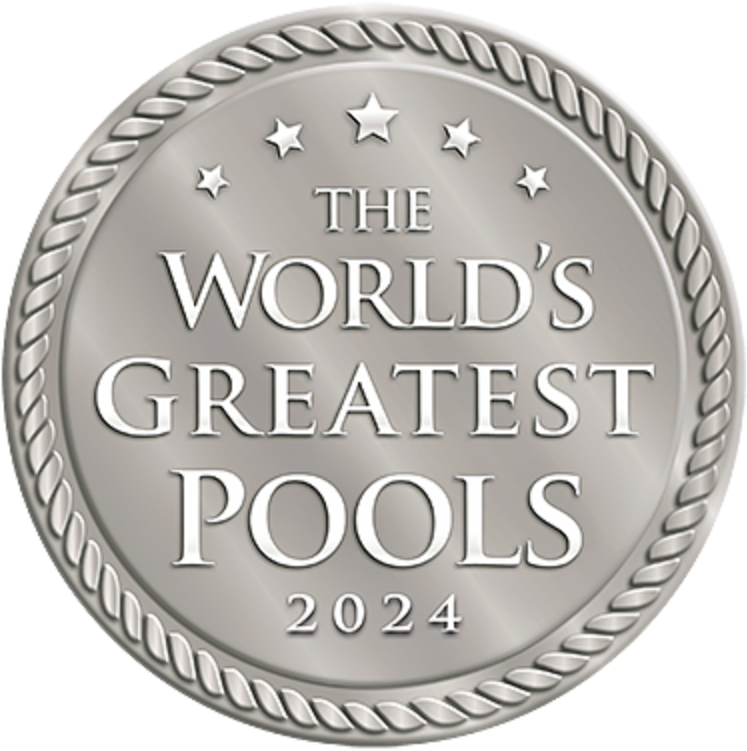To identify the perfect size for your plunge pool, start by evaluating the dimensions of your available yard space. A plunge pool, typically between 4-7 meters in length, 2-3 meters wide and 1.2-1.6 meters deep, should enhance your outdoor area without overcrowding it. Consider your primary goal: relaxation, fitness, or entertaining, as it will influence your scale decision. Think about decking and landscaping room around the pool. Keep in mind, plunge pools can increase property value while requiring less upkeep than larger pools. As you further explore, you'll discover how to balance size, cost, and design, crafting your dream plunge pool.
Understanding Plunge Pool Basics
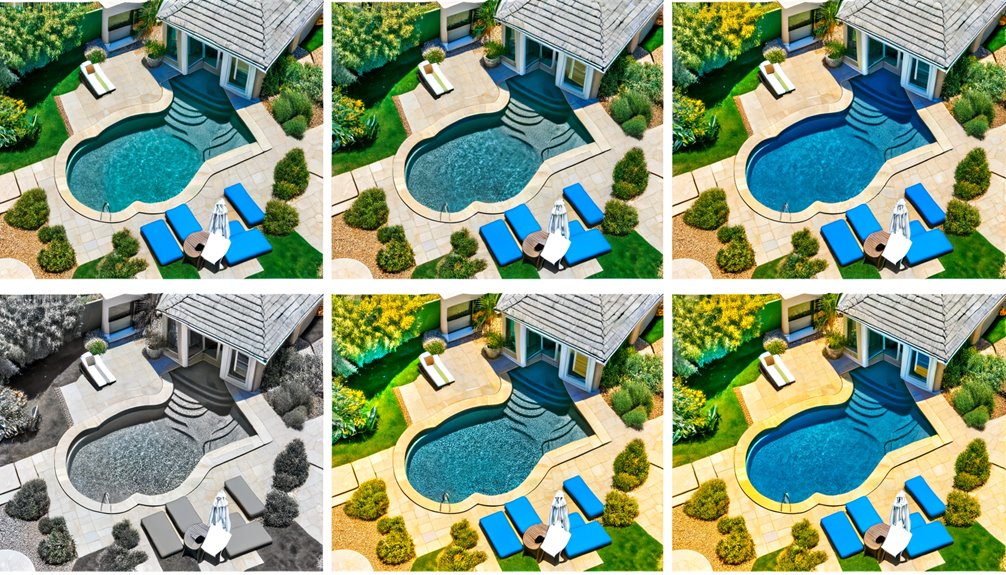
Diving into the concept of plunge pools, it's vital to grasp the basics. Think of them as mini-oases, perfect for relaxation, yet small enough for tighter spaces.
A plunge pool's benefits are manifold, offering relief from the summer heat, a spot for low-impact exercise, and an added aesthetic touch to your garden.
However, plunge pool maintenance shouldn't be overlooked. Regular cleaning, water testing, and equipment checks are important.
Don't let the size fool you – keeping the water chemistry balanced and the pool's surface clean is as significant as with larger pools. Yet, due to its smaller size, the upkeep is generally less demanding and more cost-effective.
Assessing Your Available Space
Before you plunge into the world of plunge pools, it's essential to assess the space available in your backyard. Take a good look around; evaluate the overall shape and the potential pool dimensions.
Is it a narrow, long space, or is it wide and open? Maybe it's an unconventional shape that requires creative space optimization. Whatever the case, it's important to get a clear picture of your space. Measure it accurately, jotting down the length, width and depth.
Don't forget to evaluate the room needed for decking or landscaping around the pool. Remember, the goal is to add a plunge pool that enhances your outdoor living space, not overcrowd it.
This careful evaluation will pave the way to finding the perfect plunge pool for your backyard.
The Purpose of Your Pool
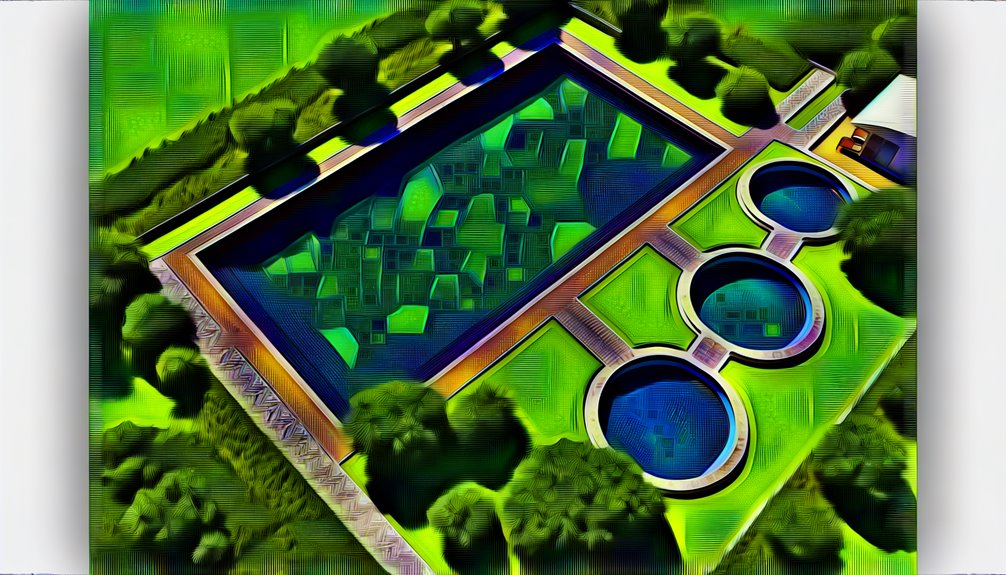
Before we move any further, it's critical to contemplate the primary purpose of your future plunge pool.
Are you envisioning a tranquil haven for relaxation, or do you see it as a hub for fitness activities or social gatherings?
Keep in mind, the function affects both the size and the location of your pool, adding another layer to your decision-making process.
Leisure vs. Fitness Uses
Though you may initially be drawn to the compact elegance of plunge pools, it's important to contemplate their purpose in your daily routine.
Are you seeking relaxation benefits, or incorporating a new element into your workout routines?
For relaxation, a plunge pool provides a tranquil space to unwind. The gentle lapping of water can help soothe the mind, while the cool temperature can offer relief on hot summer days.
On the flip side, if fitness is your goal, plunge pools can be surprisingly versatile. With the addition of resistance jets, you can swim in place, achieving a full-body workout.
Entertaining Space Considerations
Reflecting on your plunge pool's purpose, whether for relaxation or exercise, brings us to another key consideration: entertaining. The right layout can transform your pool area into an inviting space for guests. Consider your outdoor furniture, seating arrangements, yard design, and privacy solutions.
Here's a table to help you visualize:
| Outdoor Furniture | Seating Arrangements | Privacy Solutions |
|---|---|---|
| Lounge chairs | Circular seating | Fencing |
| Patio sets | Poolside stools | Greenery screens |
| Sunbeds | Dining sets | Curtains or drapes |
Choosing furniture that complements the pool's size enhances the space without overcrowding. Circular seating encourages socializing, whereas poolside stools offer casual, fun options. For privacy, consider fencing, greenery screens, or even curtains. Tailor these elements to your taste, ensuring your pool area is not only functional but aesthetically pleasing.
Pool Location Factors
While you might be tempted to place your plunge pool anywhere in your yard, it's crucial to think about its intended purpose. You should consider pool orientation, as this impacts sun exposure and privacy. A north-south orientation, for instance, maximizes sunshine throughout the day.
Also, think about terrain integration. How will your pool blend with existing features? Perhaps nestled near a grove of trees for natural shade, or closer to your patio for easy access during gatherings?
The pool's location could either enhance or disrupt your yard's flow. So, whether it's for entertainment, relaxation, or exercise, always remember that the perfect plunge pool location is one that seamlessly meets its purpose within your terrain.
Standard Sizes of Plunge Pools
Few things can compare to the luxury of having a plunge pool in your backyard. However, it's crucial to understand standard plunge sizes before making any decisions.
Typically, plunge pool dimensions settle around 4 to 7 meters in length and 2 to 3 meters in width. They're compact but deep, usually ranging between 1.2 to 1.6 meters. These sizes allow for a revitalizing dip without taking up too much space.
But remember, standard doesn't mean fixed. The beauty of plunge pools lies in their flexibility. You can tweak these dimensions to better suit your backyard's layout or your personal preferences.
Just make sure you're not straying too far from these guidelines, as it may affect the pool's functionality.
Customizing Pool Dimensions

Immerse yourself in the domain of customization, where the size of your plunge pool is limited only by your imagination.
1. Pool Shape: You're not confined to traditional shapes.
Maybe you're dreaming of a circular pool or a freeform design that mimics a natural lagoon. Go for it!
2. Design Aesthetics: The pool's dimensions should harmonize with the overall look of your home and yard.
3. Practical Considerations: Don't forget about practical issues like the location of utilities and trees, or the slope of your yard.
Key Considerations for Pool Depth
Diving into the topic of pool depth, it's essential to contemplate a few key factors. Your pool's depth can greatly impact pool safety and the types of activities you can enjoy. Here's a table summarizing the depth recommendations for various activities:
| Activity | Minimum Depth (ft) | Maximum Depth (ft) |
|---|---|---|
| Wading | 1.0 | 3.0 |
| Swimming | 3.0 | 4.0 |
| Diving | 8.0 | 12.0 |
Balancing Size and Cost
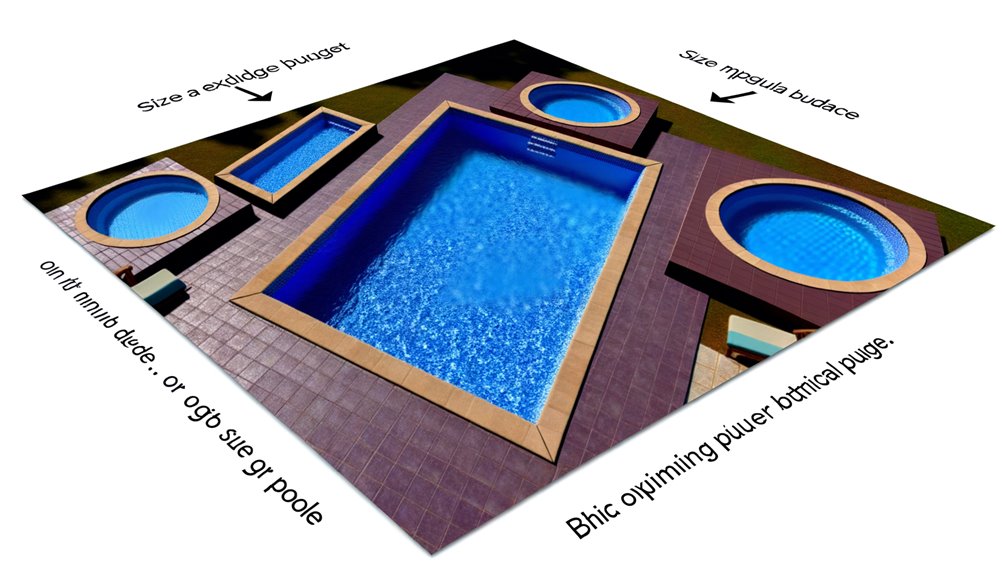
While you might be tempted to go big when choosing your plunge pool's size, it's important to remember that bigger isn't always better.
1. Cost Efficiency: Larger pools carry higher costs, not just in initial installation, but also in long-term maintenance and water usage.
It's essential to evaluate your budget realistically.
2. Size Optimization: By optimizing the size of your plunge pool, you can guarantee it fits perfectly in your yard without consuming excessive space.
This leaves room for other features or activities.
3. Balancing Act: The perfect size for your plunge pool is a balance between your budget, available space, and your personal needs.
Impact on Property Value
You might be wondering how installing a plunge pool can affect your property's value.
It's worth considering that adding a pool isn't just a fun enhancement, it's also an investment that could potentially increase your property's worth.
Let's explore how the size of the plunge pool can influence this aspect and maximize your property appreciation.
Plunge Pools: Investment Worth
Though they may be smaller in size, plunge pools can pack a powerful punch regarding increasing your property's value. Here's how:
- Aesthetic Appeal: A well-designed plunge pool adds a luxurious touch to your backyard, impressing potential buyers.
- Health Benefits: Don't underestimate the plunge pool benefits. They're perfect for low-impact exercises and hydrotherapy, appealing to health-conscious individuals.
- Easy Maintenance: Plunge pool maintenance is less intimidating than larger pools, translating to lower upkeep costs.
Investing in a plunge pool not only enhances your living experience, but can also provide a significant return when it's time to sell.
Maximizing Property Appreciation
If you're considering a plunge pool for your property, don't be fooled by its diminutive size.
It's not just a luxury addition, it's a strategic investment in your property's resale value. In today's competitive property market, potential buyers are drawn to homes with unique features, and a plunge pool certainly fits the bill.
It's a compact yet luxurious feature that can boost aesthetic appeal while offering functional benefits. A well-designed plunge pool can seamlessly integrate with your outdoor space, making your property more attractive to prospective buyers.
So, when it's time to sell, you'll likely see a significant increase in market interest, potentially leading to a higher selling price.
Size Influence on Value
While small details can greatly impact property appreciation, the size of your plunge pool can be an influential factor in boosting your property's value.
Size perception plays a critical role, as potential buyers often equate larger pools with luxury. However, it's important to balance size with the overall aesthetic of your property.
Consider these three factors:
- Market trends – Larger plunge pools are currently in vogue, but trends can shift.
- Optimization – A well-designed, moderately sized pool can add as much value as a larger one.
- Maintenance – Larger pools require more upkeep, which could deter some buyers.
Regulatory Considerations for Pools
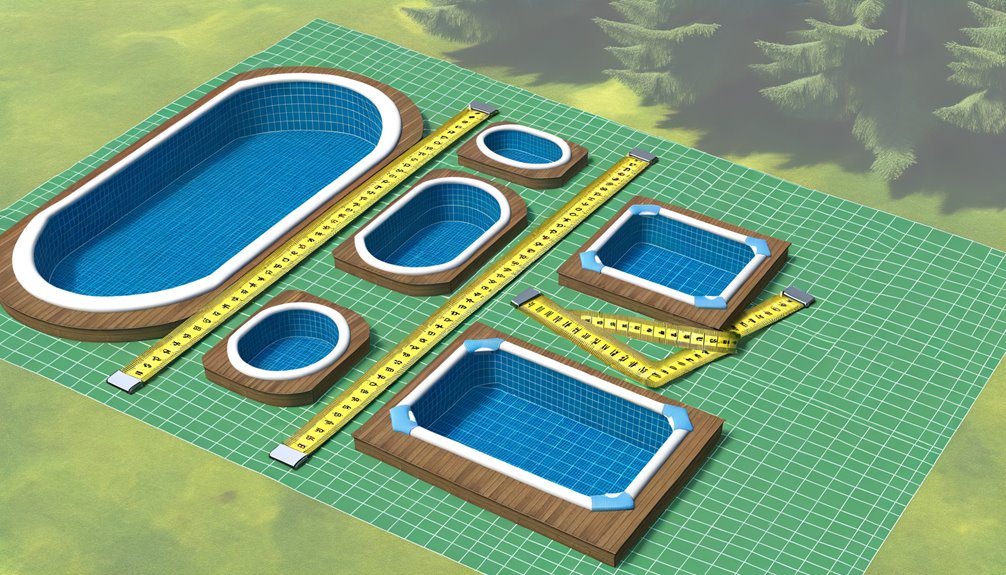
Ever considered the legal aspects of installing a plunge pool? Beyond deciding the perfect size, you're also required to secure regulatory permits.
Don't let this deter you; it's part of ensuring your pool meets safety standards. Each city or county has specific regulations, so it's essential to understand what's demanded in your area.
You may need to comply with rules on fencing, pool depth, or water treatment systems. Some areas also require inspections throughout the installation process.
Remember, these measures aren't just red tape; they're there to keep you and your family safe. So, before you plunge headfirst into owning a plunge pool, make sure you're fully aware of the regulations.
It's all part of the plunge pool journey.
Realizing Your Dream Plunge Pool
Now that you're acquainted with the necessary regulations for installing a plunge pool, it's time to realize your aspiration. Here's how:
- Design Inspiration: Look at other plunge pools for ideas. Consider various elements such as shape, depth, and materials to create a unique and personal space.
- Planning and Construction: Find a reliable contractor who understands your vision. Discuss the design and make sure it complies with local regulations.
- Maintenance Tips: Regular upkeep is essential. Keep the water clean, check for leaks, and verify the pool's equipment is working properly.
Frequently Asked Questions
What Type of Maintenance Does a Plunge Pool Require?
You'll need to perform regular pool cleaning and monitor your plunge pool's water balance.
Cleaning includes skimming debris and scrubbing walls to prevent algae.
You'll also need to check chemical levels to maintain a healthy water balance. This involves testing for pH, alkalinity, and chlorine levels.
Remember, maintaining your pool properly guarantees its longevity and your enjoyment.
It's all part of owning a plunge pool, but it's worth it for those revitalizing dips!
How Long Does the Installation Process for a Plunge Pool Take?
You're curious about the installation timeline for a plunge pool, right?
It's not a one-size-fits-all answer. Various factors affect the timeline, like the pool's design and your yard's condition.
Typically, it can take anywhere from a few weeks to a couple of months.
It's essential to have a clear conversation with your installer about expectations and timelines to guarantee you're not left high and dry.
Are There Any Eco-Friendly Options for Plunge Pools?
Absolutely, there are eco-friendly options for plunge pools.
You can opt for pools made from sustainable materials to lessen environmental impact. Additionally, consider energy-efficient systems that require less power to operate.
They're not just good for the planet, but they'll save you money over time. It's all about making choices that align with your values and needs.
What Safety Measures Should Be Considered for a Plunge Pool?
Prioritizing plunge pool safety, you should seriously consider certain measures.
Adequate fencing options can't be overlooked, it's your first line of defense against accidental falls. A self-latching and self-closing gate is essential.
Pool covers aren't just for keeping leaves out, they also add a layer of safety when the pool's not in use.
Always remember, safety should never be compromised, even when you're aiming to create a relaxing backyard retreat.
Can a Plunge Pool Be Heated and What Is the Cost Implication?
Absolutely, you can heat your plunge pool!
Various heating options are available like solar, gas, and electric. Each comes with its own cost implications.
Solar's upfront cost is high but cheaper in the long run. Gas heats quickly but is pricey, while electric is cost-effective but slow to heat.
Conduct a cost analysis based on your budget, usage, and location to determine the best heating option for your plunge pool.
